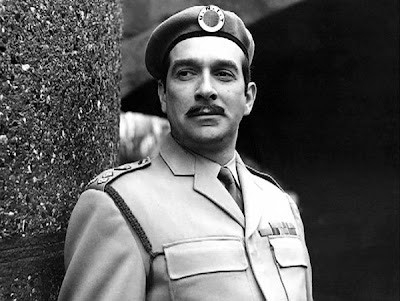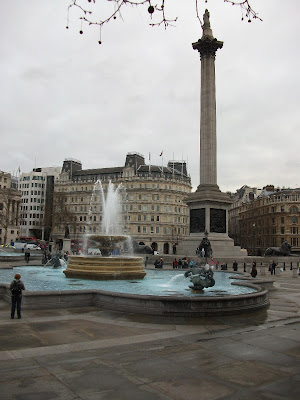
With the release of the recently discovered episode two my appetite for this story was whetted so I thought to give a recon a go with the remaining episode three. Previous to this I have only seen a few clips of the fish people on the 30 Years documentary from many years ago. The reputation for this story is that it is diabolical, badly made and acted and hated by the cast. Oddly enough, I found it quite entertaining and look forward to seeing episode two put into place. I read some comments expressing the wish that it hadn't been found, or sadness that it wasn't something else. But missing episodes are always a bonus and you don't get to choose them so be happy for each one.
The story is notable for going hugely over budget and still looking rubbish in a season that gave us two of the best Dalek stories made and two cybermen stories. The cast didn't get on with the director and became difficult driving her to tears. The sets overall look good and from the pictures with water pouring through and collapsing they may be fairly impressive. It doesn't seem clear if a sizeable amount of the budget was blown on making the fish people, as monster of the week, or if the swimming scenes in episode three were extended specifically to get their money's worth and pad it out a bit. I certainly suspect the latter, as this extensive scene is otherwise superfluous other than to indicate that the fish people are spreading the word about their strike. It is nice that this bit exists in episode three as otherwise their contribution to the story would be largely lost, but I was surprised how much of it there was, it's well made but is only people bobbing around on wires pretending to be swimming. Otherwise the fish people don't appear much overall and the story could be achieved without them. There's also a daft run around scene in a marketplace where the regulars inexplicably expect to be able to capture Zaroff (shopping for vegetables perhaps?) and Troughton dresses up as a gypsy with 60s sunglasses. Definitely some padding here for episode three and general nonsense that tips the silly campness of the story into outright farce.
The fish people are not villains but slaves farming plankton that agree to 'go on strike' as soon as the concept is suggested to them. Prior to this it doesn't seem have occurred to them to challenge their life of servitude. So much of the story doesn't make sense. But there again, Professor Zaroff is just plain mad, a proper old style mad scientist and you don't get many of those. An explanation offered was that he blames 'the world' after his family died in a car accident but this was cut from the script. His plan is simply to destroy the world for the sake of it - that's pretty much it. In the name of science of course. I don't understand the dislike of his character, just take it as a bit of fun, at least he gets to chew up the scenery a bit unlike the regulars who get rather less to do.
Polly does very little but whimper for most of the story after nearly undergoing an operation to become a fish person, while servant girl Ara proves quite proactive in helping the Doctor. Ben gets a reasonable amount to do but Jamie is short on material and is even uncharacteristically weak in a fight scene. Although he was added to the script as an afterthought as the story order was changed putting this after The Highlanders. Overall you can probably tell that there are too many companions trying to get too little material which is why they seem to spend a lot of time walking around in mines and tunnels while Troughton gets plenty of longer scenes with Zaroff.
After failing to kidnap Zaroff the Doctor's plan is to flood Atlantis which is a bit mad in itself. The people living down they just have to be warned to get out and the fish people disappear. As the king says that there will be 'no more fish people' it's open to interpretation where they go. Either they have been crushed or trapped, or they have swum out to sea and off to a potential sequel. Even odder is that with Zaroff defeated the King declares that superstition and gods got them into the mess with Zaroff so they will abandon them all and set up a secular society. This is all done in the most casual manner and is rarely commented upon. Yet if done today in New Who there would be all sorts of claims of an atheist agenda behind the series as has already been made on the most tenuous of reasons.
In summation, it's reminiscent of the Web Planet, but at least they had the excuse of doing it for the first time as an experiment. I actually prefer this to the Web Planet because I enjoyed Zaroff and Patrick Troughton's Doctor, and it's some what shorter than Web Planet that drags. At least Underwater Menace keeps up a reasonable pace. But they should have know it wasn't going to work and the whole thing creaks like a B-Movie. Episode two will be a decent addition though and help round out the story a bit more as it was my impression from the audio was that this episode is more interesting than the third which is padded with silliness.

"Nothing in the world can stop me now!"
How could I end without mentioning one of the best lines in the whole piece? Zaroff is up there with the greatest and most memorable megalomaniacs of the whole series. As a point of reference, the accent isn't put on but is apparently Joseph Furst's own. Secondly he says the above line straight which defies some expectation as it has become common to quote it as some exaggerated variant along the lines of "Nuzzing in ze vorld can schtop me now!"
The story also marks the final appearance of the 2nd Doctor's hat. Some say that it last appears in episode one, but it appears in episode four in the Tardis; telesnaps show Polly wearing it while still dressed in her fish person frock acquired during the story.















































